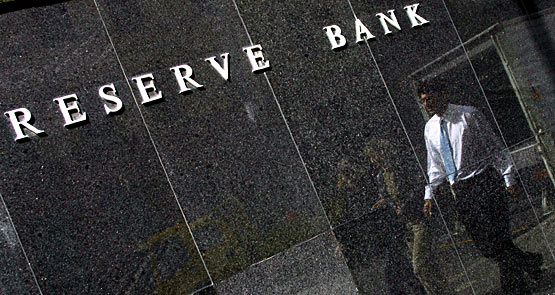
Interest rate rise coming. Reserve Bank assistant governor for financial markets Guy Debelle told a Sydney financial conference yesterday that the now-anticipated Fed rate rise (the minutes of the latest Fed Open Markets Committee meeting in late October, released overnight, have hardened up the chances of a rate rise happening) is likely to generate volatility in financial markets. And he says some in the markets will be surprised, even though the rise will have been well signalled, and some people will lose money.
“For anyone to not be prepared for it really has no excuse … There’s a decently large chunk of people in financial markets that don’t know what happens when the Fed raises its interest rate,” he told the Bloomberg Summit in Sydney on Wednesday. “So, there will be a bit of learning by doing, and learning by doing generally entails a bit of volatility.”
And why don’t a lot of people know what happens if the Fed lifts rates? Well, the last rate rise was in June 2006, by 0.25% to 5.25%. Yikes! Trading rooms around the world, including Australia, have had a pretty big turnover of staff, and there are few people left with the experience of an actual Fed rate rise (still the world’s most important monetary policy decision). US rates have been steady at the ultra low 0-0.25% range since December 2008 when the GFC hit. So what Debelle is saying that there are many who will learn the hard way by being caught short or on the wrong side of a transaction — that will be costly and introduce more volatility into markets.
For much of this year we have seen a public “outpouring” of exasperation from the RBA (and its co-regulator, APRA) about the way the banks and the big four specifically have botched making loans to housing investors, and then accounted for it in their loan portfolios — in many cases, wrongly. That, in turn, has completely broken the long statistical data base the RBA has assembled on home lending over the past few decades. — Glenn Dyer
HBOS chickens coming home to roost. A Senate committee is probing the way the Commonwealth Bank (which now wants a bit more ethicality in its everyday life) treated customers of Bankwest when it bought the Perth-based bank from the about-to-collapse UK major HBOS in the GFC. Well, in London tonight, a long-awaited report into HBOS will be made public and is sure to add to the questions around the competence and ability of many of those executives who sold Bankwest to the CBA. According to UK media previews, the report will come from the two key UK banking and financial regulators — the Prudential Regulation Authority (PRA) and the Financial Conduct Authority (FCA) — and is likely to reveal a fresh probe into the actions of various senior HBOS bosses. — Glenn Dyer
Last look fine for Barclays. One of the great rorts of global foreign exchange dealing has been pinged by US regulators and is heading for extinction. It’s called the “last look”, in which market makers use their electronic trading systems to take a last look at unprofitable trades (where clients have been better at picking currency movements than the bank) and then reject them — and then lie to clients about the practice (dog ate your quote?).
The Bank of England defines last look as “a practice whereby market makers have a final opportunity to accept or reject orders where a client wishes to trade against their quoted price”. The practice originally developed years ago when all trading was paper-based and there were big time delays between setting a price and executing it (shares, commodities, bonds, currencies, etc). But now all trading is heavily or totally automated and the time delay is in milliseconds and the exposure of the bank or market-maker to a loss is tiny. Regulators want the practice ended.
In the settlement, New York State Department of Financial Services accused Barclays of instructing one of the algorithms it used to automate some of its currency trading to broadly reject unprofitable orders. Then when clients asked about the rejected trades, a Barclays managing director and head of automated electronic FX trading instructed traders to “obfuscate and stonewall” and avoid mentioning the existence of last look. Barclays was fined US$150 million (more than A$211 million).
Barclays has form in dodgy foreign exchange practices. In May it was one of a group of six banks fined a total of more than A$7 billion for rigging foreign exchange pricing and the London Inter Bank Offered Rate market (the key global indicator interest rate for banks). — Glenn Dyer







Barclay – the integrity of a casino in a top hat.